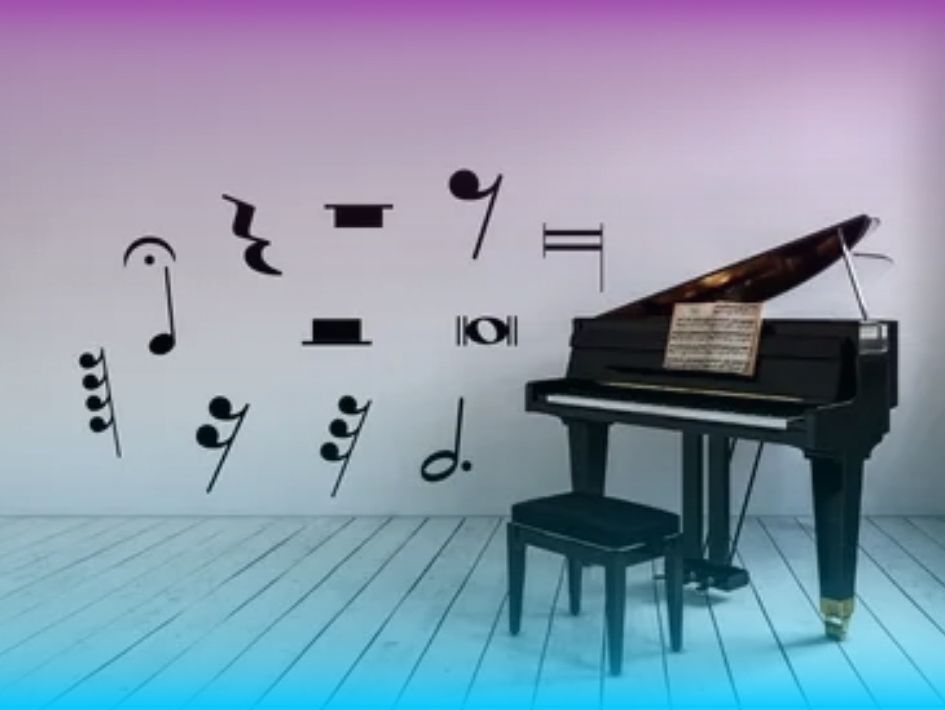Music is not just about the notes you play but how you play them. Dynamics in music, as well as the variations in volume, are crucial elements in shaping a piece of music's emotional depth and character. Whether you’re
playing softly (piano), loudly (forte), or somewhere in between, dynamics create contrast and give a sense of movement.
In this guide, we’ll explore the different types of dynamics in music, how they influence your performance, and why understanding dynamic range is essential for any musician. Let’s dive into how playing with varied volumes can bring music to life.

What are Dynamics in Music?
Dynamics in music refer to the volume of sound in a piece of music. They give performers the tools to express emotion and mood, helping create dramatic contrasts or subtle nuances. Music dynamics are indicated by various markings in a score, ranging from soft (piano) to loud (forte), with numerous gradations in between. These dynamics direct performers on how loudly or softly to play, making them essential to interpreting and communicating the music’s emotional depth.
In music theory, dynamics are closely tied to the emotional impact of a performance. A piece of music with a wide range of dynamics can evoke powerful emotional shifts, while subtle changes can add nuance and complexity to a more intimate performance.
The Basic Dynamic Markings
The most common dynamic markings you’ll encounter in music are:
- p (piano) – soft
- f (forte) – loud
- mp (mezzo-piano) – moderately soft
- mf (mezzo-forte) – moderately loud
- pp (pianissimo) – very soft
- ff (fortissimo) – very loud
- crescendo (cresc.) – gradually get louder
- decrescendo (decresc.) – gradually get softer
These markings tell you how loud or soft to play a passage, but they can also include more specific instructions, like "crescendo," to change the dynamics over time.
Understanding the Emotional Impact of Dynamics
Music dynamics are more than just volume; they influence the emotional character of a musical piece. A soft passage can evoke tenderness, sadness, or introspection, while a loud section can generate excitement, power, or even anger. A gradual change in dynamics, such as a crescendo, can build tension, leading up to a climactic moment. Conversely, a decrescendo can create a sense of release or calm after an intense passage.
In genres like classical music, dynamic shifts are often used to create musical elements that evoke deep emotional responses, while in electronic music, dynamic processing might be used to shape the sound, giving it a more controlled or punchy impact. Each dynamic level adds a layer of emotional storytelling, giving the musician the ability to express nuances beyond what is written in the notes.

Techniques for Controlling Dynamics
Playing with proper dynamics requires technique and control. Here are some tips for mastering dynamics in music:
- Breath control: In wind instruments, breathing technique affects volume control. A steady, controlled breath allows you to smoothly vary dynamics.
- Finger technique: For pianists, how you strike the keys determines volume. A light touch produces a soft sound, while a stronger touch creates a louder sound. Practice playing scales at different dynamic levels to get a feel for control.
- Bow pressure: For string players, the amount of pressure you apply with the bow changes the sound’s intensity. Using a light touch creates a delicate, soft sound while applying more pressure produces a louder, fuller tone.
- Pedaling: On the piano, the sustained pedal can affect dynamics. Using it sparingly allows for more distinct changes in volume, especially when playing softer passages.
The Role of Dynamics in Different Music Genres
Music genres use volume dynamics to communicate a different range of emotions. Here’s how dynamics play out across some popular genres:
- Classical Music
Classical pieces often involve subtle dynamic shifts, with large-scale contrasts between quiet, lyrical moments and powerful, fortissimo sections. The dynamic range is used to explore emotional extremes, from the delicate nuances of Baroque music to the bold statements of later Romantic composers.
- Jazz
In jazz, dynamics can shift rapidly, with spontaneous changes in volume reflecting the improvisational nature of the music. Musicians often rely on dynamics to build energy and create tension.
- Pop Music
In modern genres like pop music, dynamics help create contrast between verses and choruses, with soft, intimate sections giving way to louder, more energetic moments. Compression settings are often adjusted in the mastering process to control the dynamic range in commercial recordings.
- Electronic Music
In electronic music, dynamics are shaped using dynamic processing techniques. A compressor plugin is frequently used to reduce the dynamic range, ensuring that the sound fits well within playback systems and maintains clarity at different volume levels.
Understanding and mastering dynamics in these various genres can deepen a musician’s expression and enhance their performance, as well as strengthen their ability to navigate the dynamic range within a musical composition.

The Power of Silent Spaces: Rests and Pauses
While dynamics refer to the volume of sound, silence is also an essential part of musical expression. Pauses or rests, where no sound is played, create space for the dynamics to have more impact. A sudden silence can emphasize a change in dynamics, making the next note or phrase stand out dramatically. These moments are just as important as the sounds themselves and require careful attention.
How to Interpret Dynamic Markings
Not every dynamic marking is created equal, and interpretation plays a role in how dynamics should be applied. A "p” might mean to play softly, but how softly should it be? It can vary depending on the piece of music's context or the performer’s style. Listen to recordings of performances of the same piece and note how dynamics are used. This can give you insight into different interpretive choices and help you decide what fits your expression.
Challenges and Practice Tips
Mastering dynamics can be a challenge. Here are a few practice tips:
- Slow practice: Focus on dynamics by practicing slowly. This allows you to pay more attention to the gradual changes in volume and control.
- Exaggerate the contrast: Start by exaggerating the dynamic contrasts—play extremely soft and extremely loud—and then scale it back to a more natural level.
- Use a metronome: For crescendos and decrescendos, practicing with a metronome can help you gradually increase or decrease volume at a steady pace.
Summary
Dynamics in music are an essential element that can transform a simple melody into an emotional experience. Whether you’re playing softly or loudly, the volume you choose influences the mood and energy of the piece of music. By understanding and controlling dynamics, musicians can give their performances depth and expressivity, bringing music to life in ways that go beyond the notes on the page.
Ready to explore the power of dynamics in music?
Visit Muzeg for expert guides, practical tips, and comprehensive resources on mastering dynamic range and enhancing your music expression. Whether you're looking to perfect your control over volume levels or explore the emotional power of dynamic shifts, Muzeg will help you bring your music to life with every note. Dive into dynamic music techniques today and elevate your performances to new heights.
Bringing Music to Life with Dynamics: Final Thoughts
Incorporating dynamics into your musical performance can elevate a piece, transforming it from a simple arrangement of notes to an emotionally powerful expression. From soft whispers to loud climaxes, you gain the ability to communicate a wide range of emotions and create moments of tension and release.
Whether you're performing a classical sonata, improvising in jazz, or producing electronic tracks, dynamics play a major role in shaping the emotional depth of your music. With consistent practice, attention to detail, and an understanding of the different dynamic markings, you'll be able to bring your music to life in ways that captivate and move your audience. So, embrace the dynamic range and let your music speak through every variation in volume.


